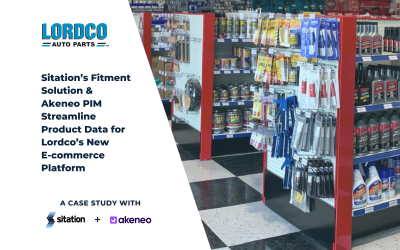Introduction
As you search the internet for answers about what product information management software can do for you, let the experts here at Sitation cut right to the chase with the answers you need. Today we will spend some time with certified Akeneo expert, Matt Helm, here at Sitation. As an active part of our gold partner relationship and solution offerings, he has agreed to share some of his basic knowledge to help us understand the purpose and value of Akeneo.
Akeneo Expert Interview
Aishia Williams: Hi Matt! How long have you been working at Sitation and what is your role?
Matt Helm: I started working at Sitation in August of 2020, so I’m coming up on two years with the company. My job title is Senior Solution Architect.
Aishia: How long have you been using Akeneo and in what capacities?
Matt: I’ve been working with Akeneo for around five years. My first exposure to Akeneo was on the 1.7 version. Originally I built custom add-ons for Akeneo clients that needed extra features. Now I mainly help companies implement Akeneo’s SaaS Serenity offering and build API integrations for connecting Akeneo to other platforms.
Aishia: Wow! Akeneo is on version 6 now. I imagine a lot has changed.
Matt: Consistent upgrades have been made in the program functionality. The current edition is called Serenity. It is like an Akeneo 6 plus additional features.
Aishia: Oh! I think Georges Dzuricsko explains the editions in detail in an upcoming blog. Now for what the people really want to know…What is Akeneo Software used for?
Matt: Akeneo is a Product Information Management (PIM) software. The goal of Akeneo is to give companies a single source of truth for their product data. For example, a company that sells shoes will need to know the color, size, brand, description, product image, etc. Often companies don’t have a centralized location for capturing this type of product data. Akeneo provides a centralized source of truth for anyone looking into that information.
Aishia: Who is the target/Ideal Akeneo user? Who does it help and how?
Matt: Akeneo can add value to many different roles at an organization. The primary users will be product data managers whose core responsibilities are gathering and maintaining product data. Akeneo has a variety of tools for searching, organizing, and updating product data that should help data managers speed up and simplify their day-to-day tasks.
The enterprise version of Akeneo allows additional management of Image, Document, or other asset data. This section of Akeneo may have a different primary user from marketing. There are other add-ons to the Akeneo such as Onboarder and Shared Catalogs that would allow vendors and end users respectively to interact with data in Akeneo. Overall, Akeneo is primarily for product data managers, but there are many other groups that may find value depending on what features of Akeneo are used.
Aishia: What is the value?
Matt: Having a single, centralized source of truth for product data has its own value. It eliminates the file shuffle and everyone on the team knows where to look if they need product information. Using Akeneo will improve data governance to prevent things like typos or other inconsistencies in product data.
On top of that, Akeneo contains many tools for maximizing the data team’s ability to view and work with data. Each user can create custom views for filtering and searching data. Permissions can be set up to expose and restrict access to data per user. Users can create customized data exports to extract data from Akeneo. On top of these features the Akeneo development team is frequently adding new features and there is a marketplace for other add-ons to the platform.
Aishia: How can I learn more?
Matt: Akeneo has some great documentation. These links are helpful for general information, working in Akeneo, and technical information.
Aishia: Thanks for simplifying that for us Matt. For additional questions about Akeneo, reach out to us here at Sitation.





